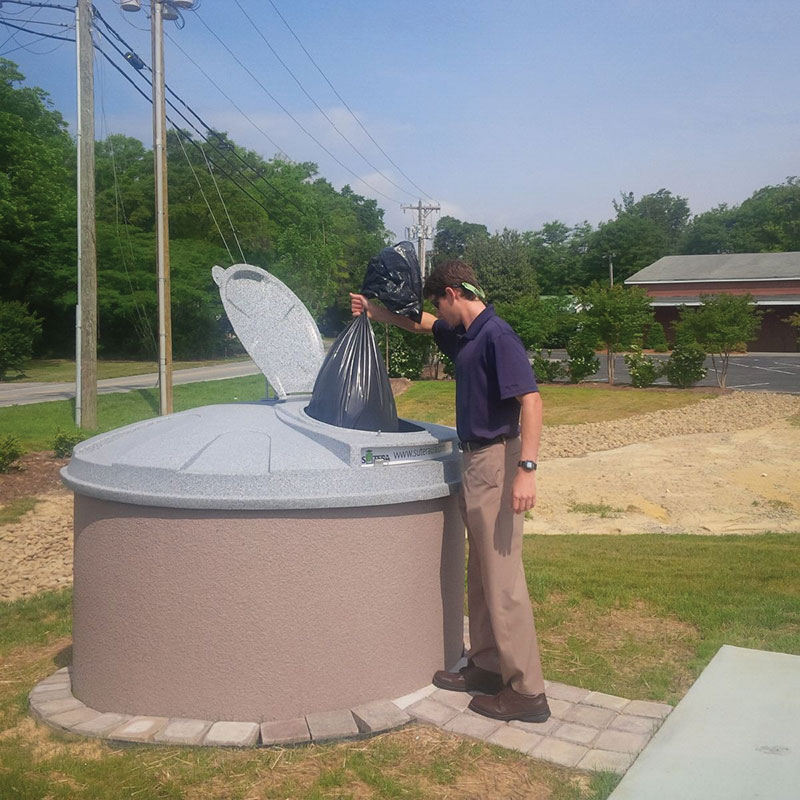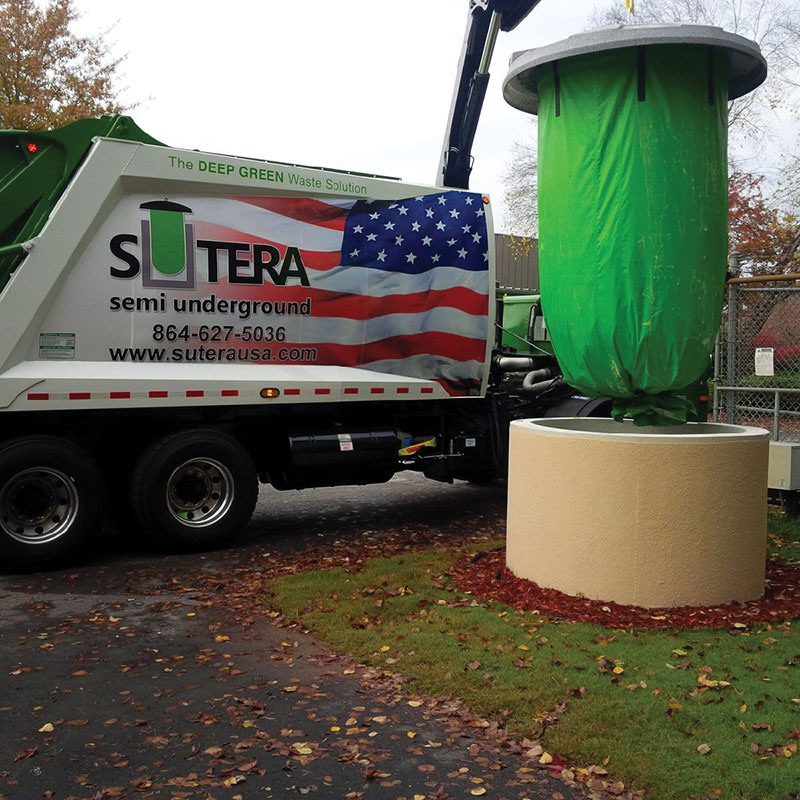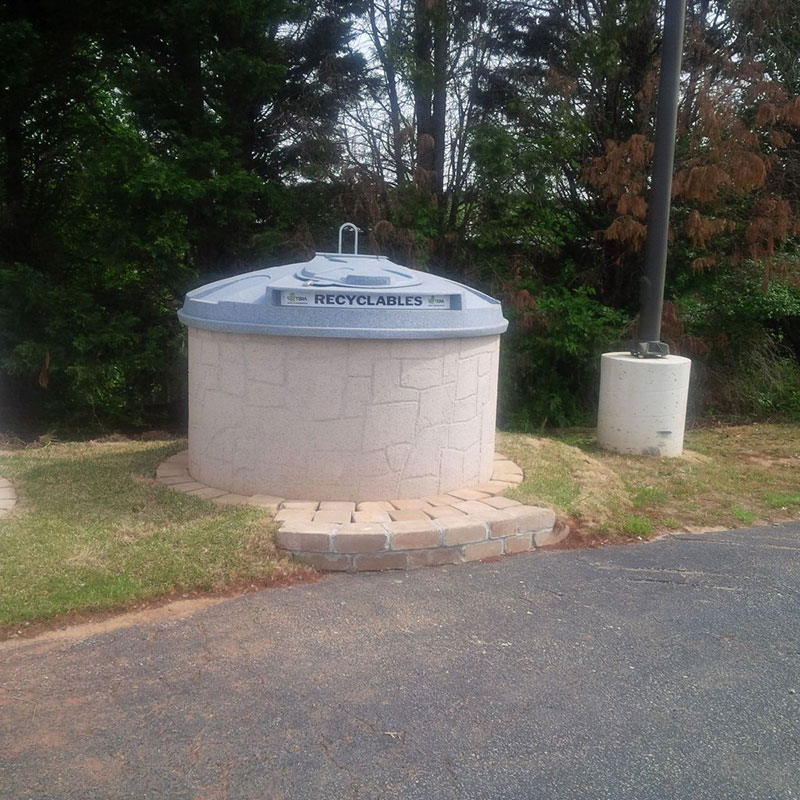Four reasons why underground waste containers are an essential step toward a more efficient, economical and environmentally friendly waste management solution.
By Brian Brandon
We have been conditioned to accept that traditional dumpsters are the one and only way to collect waste, especially at high-density sites.
We have accepted that these dumpsters will be in various states of disrepair. We are resigned to paying large amounts for their maintenance and frequent pickups. And we have given up on trying to save space, as their footprint requires ample clearance and large enclosures.
Waste collection has been a stagnant industry for some time. Small changes in technology and scheduling have provided incremental improvements, but it wasn’t until recently that we witnessed a true waste collection revolution.
With a history dating back to the 1980s in Europe, underground waste containers are the future of waste collection. If you’re looking for a progressive, future-proof method of collecting waste from high density properties, this is it.
 There are many reasons why you should consider an alternative waste container, four of which we’ve outlined below.
There are many reasons why you should consider an alternative waste container, four of which we’ve outlined below.
1. Prevents non-stormwater discharge from entering the storm sewer system, unlike traditional waste containers
The semi-underground container comes with a sealed precast concrete well, and a sealed access lid that provides excellent protection from rain entering the container. The traditional waste container can collect rain water, which may cause leaching of contaminated food waste or other liquids. This discharge may occur in a heavy rain or during dumping.
2. They are aesthetically appealing
A dumpster is a dumpster is a dumpster. There isn’t much they provide in the ways of looks. Typically green or black (or, in many cases, green or black with rusty brown spots), they are such eyesores that many end users simply try to ignore them.
But that doesn’t have to be the case. An emerging trend in underground waste collection is to create not just a more efficient system, but a more eye-catching system as well.
Although designs vary, the typical underground waste container is cylindrical and made from concrete, plastics and long-lasting metals. On their own, they are manufactured to look good, and many can be customized with wood, metal or plastic exteriors based on the needs of the property owner. However, some manufacturers go above-and-beyond to create an aesthetically-appealing experience.
Some underground waste containers enable their above-ground components to be clad in a variety of fully customizable wraps. This means that property owners can create waste systems that blend in with the landscaping, or display advertisements or messages to their users.
The containers can be completely out of site with the use for 4-foot-high shrubs. Place in such a manner that the public has easy access to the unit and still can be serviced with the articulating crane.
3. They reduce odor and deter pests
Storing waste underground has many added benefits besides a larger capacity and a more visually-appealing experience. With the majority of the waste underground, these systems create a naturally pest- and bacteria-resistant environment.
 The fact that the waste is underground and inaccessible, combined with tightly locking lids, act as pest deterrence, helping to create a clean environment that discourages animals and insects from gathering.
The fact that the waste is underground and inaccessible, combined with tightly locking lids, act as pest deterrence, helping to create a clean environment that discourages animals and insects from gathering.
And by storing waste underground, the system not only prevents pests from accumulating, but bacteria as well. The colder temperatures underground deter bacteria from forming and thriving. And as an added bonus, this is achieved in a natural, environmentally friendly manner; no chemicals or other damaging solutions are necessary.
Ultimately, for the end user, underground waste solutions will emit lower odor and attract fewer pests, and their experience will be a positive one.
4. They can be installed practically anywhere
Traditional dumpsters have a host of requirements when it comes to placement on a property. In many areas, it is also a requirement that they have a large enclosure — which can help a bit in masking their appearance, but doesn’t help when planning a property’s layout.
Underground waste containers eliminate nearly all of these placement restrictions, allowing for property owners to place them practically anywhere. Unlike traditional dumpsters, pickup is not limited to a straight-on approach. An underground system reduces the need for that 90-foot clearance in front for truck pickup.
When an underground waste container is full, it is serviced by a truck that can lift out the internal bag vertically. This zero-clearance requirement enables property owners to situate the system wherever it is most convenient for them, and their users.
 The ability to be installed on tight sites and in hard-to-reach places can free up property space for other uses. By installing the system next to a building or interspersed within the landscaping, property owners can achieve more parking spaces or a better flow for users.
The ability to be installed on tight sites and in hard-to-reach places can free up property space for other uses. By installing the system next to a building or interspersed within the landscaping, property owners can achieve more parking spaces or a better flow for users.
Conclusion
Underground waste containers offer so many benefits to property owners, those who service them and their end users that it’s no wonder they’re growing in popularity. They are a truly revolutionary approach to waste management — changing the face of an industry that has resisted significant change for years. And while change always comes with growing pains, this is an essential step toward a more efficient, economical and environmentally-friendly waste management solution.
— Brian Brandon is the general manager at Sutera USA, LLC. After a career in construction, in May 2012 Brandon worked with a small group of people on developing a semi-underground container system. In 2013, Sutera USA, LLC was established, where Brandon took on the role of general manager. He can be reached at [email protected].
